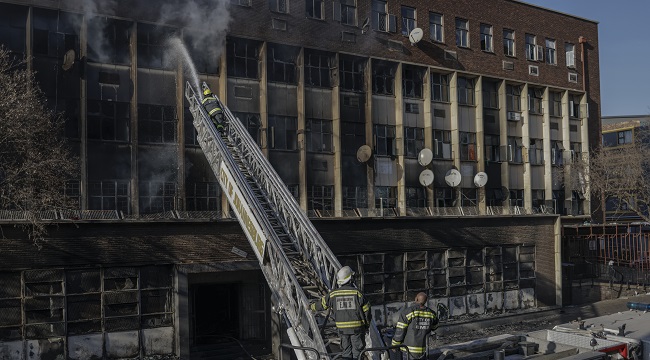South Africa recently bore witness to an unparalleled catastrophe as fire raged through an old building in the heart of Johannesburg, tragically claiming more than 70 lives. This calamity was not solely the outcome of a simple mishap. Beneath the charred remains lies a deeper narrative of a city’s descent into disorder due to poor governance.
These dilapidated buildings, many of which are unfit for habitation, have seen families inhabiting spaces that were once bustling with office activity. Shockingly, criminal gangs are often the de facto landlords, preying on the vulnerabilities of the desperate who seek shelter. Such derelict structures, colloquially termed as “hijacked,” lack even the most rudimentary amenities like running water or electricity, resulting in hazardous makeshift arrangements. Candles, paraffin stoves, and illegal electricity connections are frequently utilized by residents, intensifying the fire risks. The recent inferno, according to a survivor, was exacerbated by a power outage, a far too common occurrence in the region. It led to a sequence of explosive sounds, culminating in a massive explosion.
It’s crucial to highlight the human aspect amidst this chaos. These buildings’ occupants, comprising both impoverished South Africans and immigrants from neighbouring nations, live in perpetual fear. Not only of the hazards surrounding them but also the prospect of being found and evicted as many are there illegally.
The core of Johannesburg, despite still bearing the title of the Central Business District (CBD), has become an epicenter for crime. This gradual decline commenced post the apartheid era, after the oppressive racial segregation was dismantled. As businesses migrated north, leaving the heart of the city, old commercial edifices were repurposed into low-rent apartments. A poignant case in point is 80 Albert Street, historically significant for its association with the oppressive “dompas” system of apartheid, which later transitioned into the Usindiso Women’s Shelter. The building then devolved into another hijacked structure, underscoring the city’s grave decline.
Contrast this with the UK’s recent decisive action, prompted by lessons learned from devastating events like the Grenfell Tower fire. Last week, the UK government ordered the closure of over 150 schools identified as having a potentially perilous type of concrete. While criticized by some, this move undeniably signalled a government prioritizing its citizens’ safety. Johannesburg’s ill-fated building fire and the backdrop of neglect exemplify the opposite.
South Africa’s housing crisis, an unfortunate remnant of the apartheid era, has rendered many of its citizens homeless. Johannesburg’s attempts to rejuvenate and rehabilitate its city center have often been mired in legal and bureaucratic challenges, but the stark reality remains. The nation is starkly divided, and inequality is rampant. The recent tragedy underscores the pressing need for South Africa to emulate the proactive stance seen in countries like the UK. Blame games won’t salvage the situation. Instead, South Africa’s leadership must prioritize instituting comprehensive safety measures, ensuring tragedies like this are firmly relegated to history.
Image Credit: AFP




